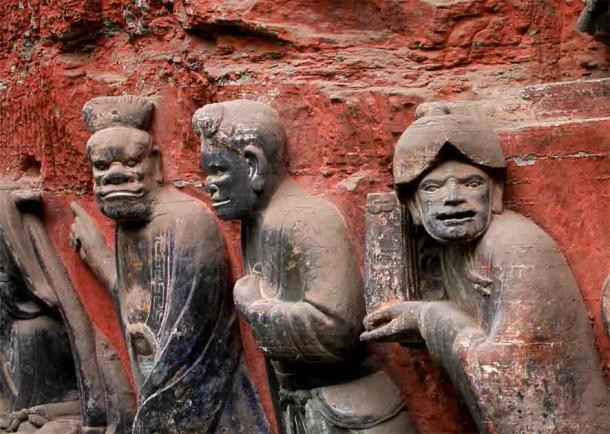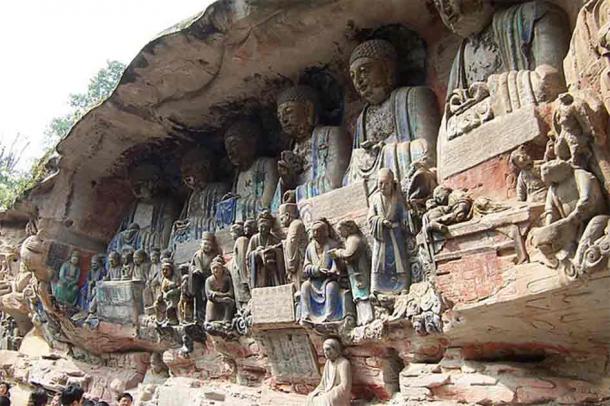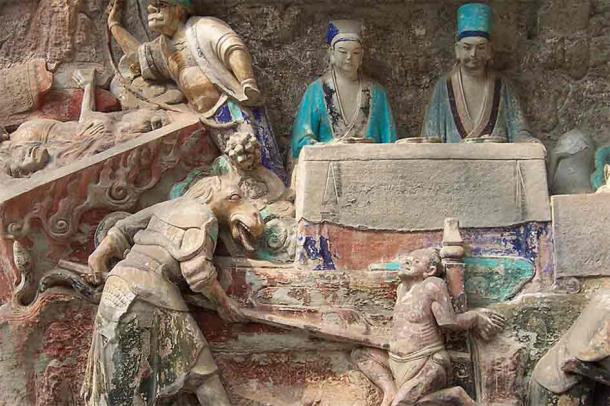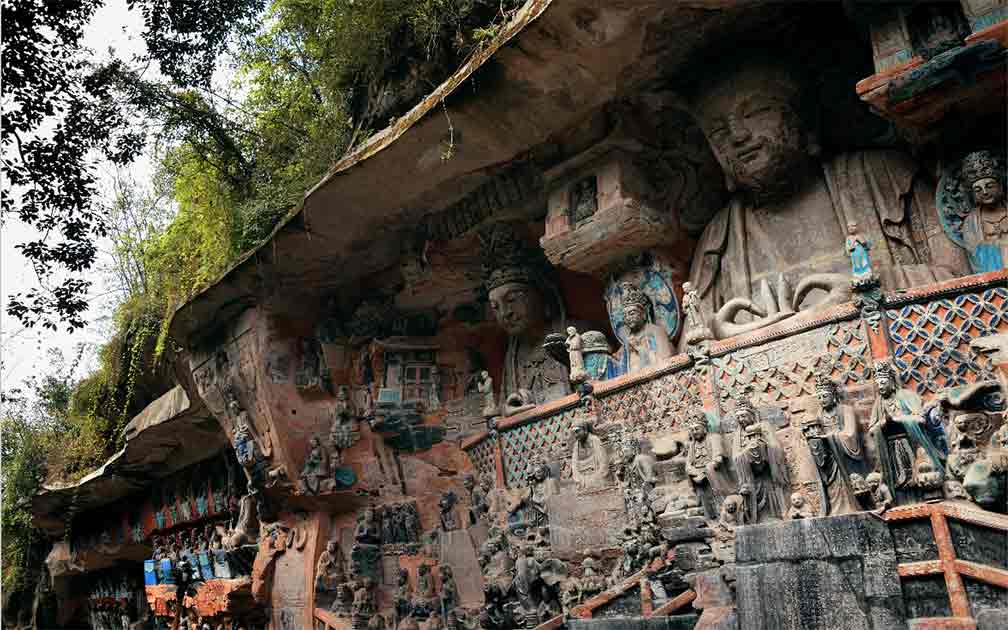The Dazu Rock Carvings are a series of Chinese religious sculptures and carvings located in the Dazu District of Chongqing, China. These carvings date back to the Tang Dynasty (618 – 907 AD) and the Song Dynasty (960 – 1279 AD), with the majority created during the 9th to the 13th centuries. The carvings are considered a UNESCO World Heritage Site and are renowned for their artistic quality, cultural significance, and historical value. Here’s what we know about them.
Dazu Rock Carvings Persevere Through Time
These magnificent rock-carved monuments cover a vast area and include more than 50,000 statues and over 100,000 Chinese characters of inscriptions carved on stone, which were made across several centuries. Scholars propose that the technique of this carving originated in Ancient India, and spread across to China with the religion. The carvings are mainly Buddhist, but there are also elements of Taoist and Confucian beliefs represented. The carvings are usually found on steep cliffs and in caves, depicting a wide range of subjects such as Buddha figures, Bodhisattvas, deities, and scenes from Buddhist stories. They were created on such remote locations in order to preserve them from possible conquerors, looters, or the direct elements.
A short segment of the carvings, showing figures such as the Ten Wisdom Kings, including Acala, Hayagriva, Ucchusma, Trailokyavijaya, Yamāntaka and Kuṇḍali. (Davidmcbride/CC BY-SA 4.0)
The carvings are notable for their diversity in style and subject matter, as well as the skillful craftsmanship that went into their creation. Having been crafted over centuries, in different and constantly modernized techniques, they serve as a window through time, showing us exactly how rock carving methods evolved over time in Medieval China.

Close-up on the detailed work of the Dazu Rock Carvings. (Bill Perry/Adobe Stock)
The Dazu carvings showcase a high level of artistic skill and craftsmanship. The artists employed various techniques, including relief carving, openwork carving, and bas-relief, to create detailed and expressive sculptures. The intricate detailing in the carvings reflects the creativity and devotion of the artists who worked on them.
A Faith Preserved in Stone
There are several clusters of Dazu Rock Carvings, with Baodingshan being one of the most famous and visited sites. Baodingshan features a large number of sculptures that depict Buddhist teachings and stories. The carvings at Dazu are, however, not limited to religious themes; they also include secular subjects such as everyday life, portraits, and scenes of filial piety. This increases their historical significance even more, as they allow us to learn more about the lives of common folk in China’s medieval period.

Baodingshan Buddha statues on the top and carvings below depicting portraits of everyday life. (Truthven/CC BY-SA 3.0)
The earliest of these carvings were started around 650 AD, during the time of the Tang Dynasty, also known as the Tang Empire. Soon enough, the site drew pilgrims and visitors, and more carvings were added. Serious work was started only around the late 9th century AD, when the Prefect of Changzhou, one Wei Junjing, started a series of carvings on Mount Beishan. This would prove to be a major undertaking, and the work would be picked up later by other pilgrims and believers. Even after the Tang Dynasty collapsed, the local nobles, commoners, and religious figures all commissioned and created new sculptures at Dazu. As space ran out, further cliff sides and rock faces at the Dazu complex were selected and worked on.
Around the 12th century AD, during the Song Dynasty, a Buddhist monk named Zhao Zhifeng started work on new carvings at the blank Mount Baoding. He would go on to devote an incredible 70 years of his life to this monumental undertaking, adding an incredible amount of carvings to the Dazu complex. Naturally, as the work at this site spans several centuries, it became unique in many ways. So, for example, it is one of the rare sites that incorporates imagery from three major religions: Buddhism, Confucianism, and Taoism.
China’s Ancient Stone Marvel
The Dazu Rock Carvings were inscribed as a UNESCO World Heritage Site in 1999, being one of the truly breathtaking ancient works of art. The UNESCO listing recognizes the site’s outstanding universal value and the need for its protection and preservation.
“…their aesthetic quality, their rich diversity of subject matter, both secular and religious, and the light that they shed on everyday life in China during this period. They provide outstanding evidence of the harmonious synthesis of Buddhism, Taoism and Confucianism.”
– UNESCO Citation

Statues of demons and officials of hell. (Truthven/CC BY-SA 3.0)
Interestingly, the Dazu complex had long been neglected, and almost completely forgotten. Remote and overgrown in foliage, it was generally inaccessible to visitors. Luckily, around 1961 conservation works were started, and soon the complex was available to domestic and foreign visitors. For a long time, however, a simple muddy goat track led to the site. Today, the situation is much better, and the complex remains a popular tourist site.
Visitors to the Dazu Rock Carvings can explore these remarkable artworks while learning about the rich cultural and historical context in which they were created. The site has been well-preserved, and efforts have been made to protect and conserve these precious carvings for future generations.
Top image: Dazu Rock Carvings in Chongqing, China. Source: rabbit75_fot/Adobe Stock
